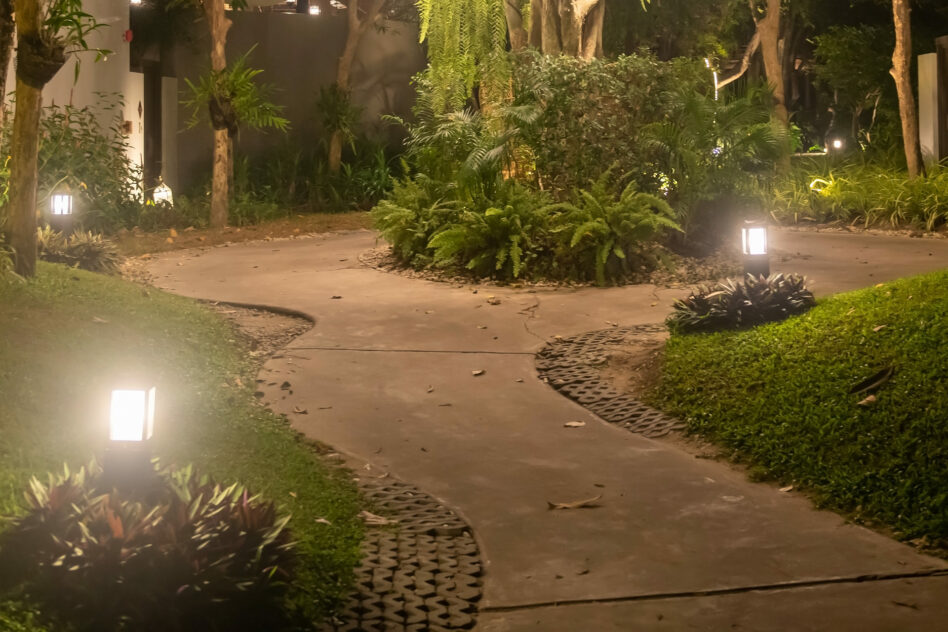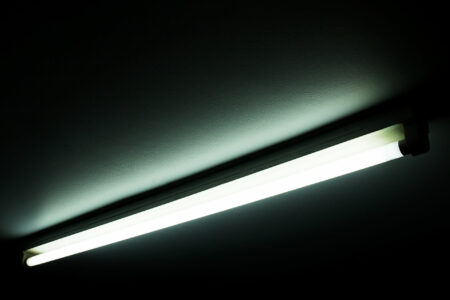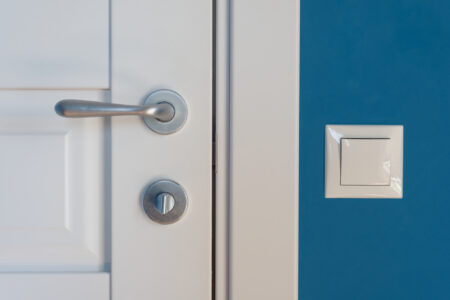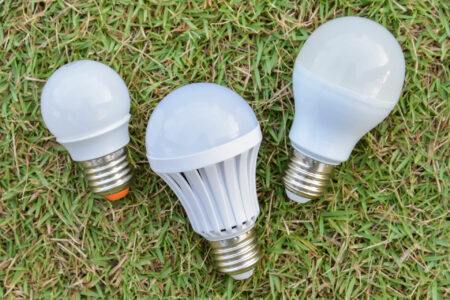Ever tripped on the walkway because of poor path lighting? You probably don’t have the right bulb brightness or any form of lighting at all. In this article, let’s talk about how many lumens is perfect for your pathways.
The Right Lumens for Path Lighting
In general, you can get away with 100 lumens for path lighting, which has the same brightness as a typical flashlight.
For paths with straight and even ground, it’s also better to have 100 lumens. That’s because anything brighter than that may hurt your eyes while walking.
Some homeowners may also prefer having 80 lumens only if the goal is simple guidance. With this measurement, you won’t be able to see the details of the pathway, but you’ll know where it leads.
On the other hand, some areas require brighter lighting due to path size. So, you may want to go up to 200 lumens if that’s the case.
This higher range is also advisable for paths with bumpy surfaces or unexpected staircases. In this way, you can be on the safer side.
Additionally, you can also add more bulbs with lower lumens to compensate for the shadowy areas, especially if you have stairs. Bulbs with 30 to 50 lumens are great for this purpose. On the plus side, these supplemental lights add dimension to your lighting.
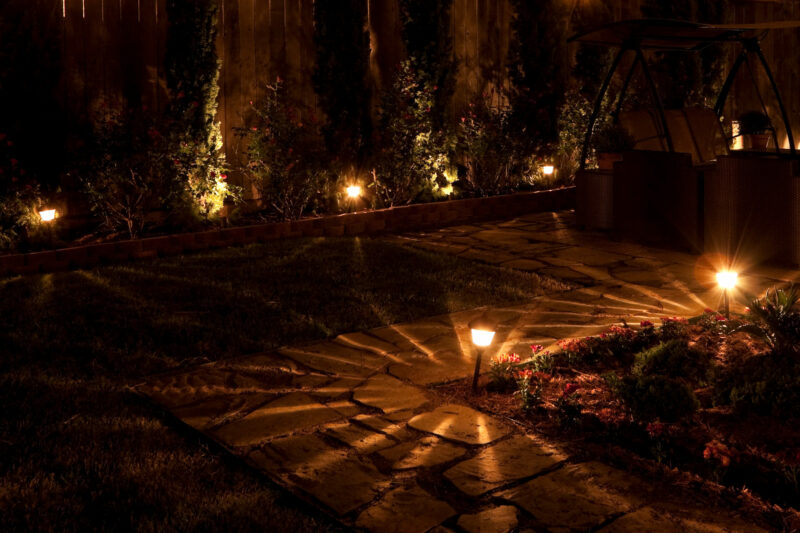
How to Place Path Lighting
The general rule of thumb when placing path lighting is to not keep them too close together. When doing so, you’re creating harsh lighting that makes your area look like it has spotlights.
Instead, place each light six to eight feet apart for good measure. Commercial areas have their path lighting closer together at four to six feet in between. This way, you won’t overwhelm the trail. At the same time, you’re still providing enough lighting to guide people down the walkway.
However, don’t be afraid to experiment either. Your main goal is that each fixture doesn’t overlap or over-illuminate the area.
A popular way to place path lighting is by installing them alternatively. This type of arrangement works best if you have wide pavement by giving you a brighter open space. What’s more, it also prevents too much light from overlapping each other.
Types of Pathway Lights
On top of knowing how many lumens you need for path lighting, you may also want to consider the type of pathway lights. Choosing the best one depends on your pathway needs and personal preferences.
Bollard Lights
This type of pathway light is one of the brightest ones. Standing at a height between 2 to 4 feet, bollard lights glow near the top.
Since they’re brighter than an average pathway light, they can reach up to 3,000 lumens. You won’t need your bollard lights to be this bright, though.
Aside from that, they also have 360-degree illumination. That’s why they’re ideal for the beginning and end of the pathway.
However, make sure to line them up far enough from each other so you don’t create a glaring pathway. Alternatively, you can use bulbs with lower lumens.
What’s great about this fixture is that you can choose between a round or square body to fit your aesthetic. They can also come in a flat or dome top. This shape creates a limited area where the light passes through. As a result, it can block the light from leaking where it doesn’t need to.
Garden Lights
People typically place garden lights near plants to shine on natural areas. However, you can use these as path lights since they usually range from 100 to 300 lumens.
Like the bollard lights, garden lights also stand higher than ground level. They range from 1.5 to 2 feet tall. As a result of this height, they won’t hurt nearby plants because of the heat.
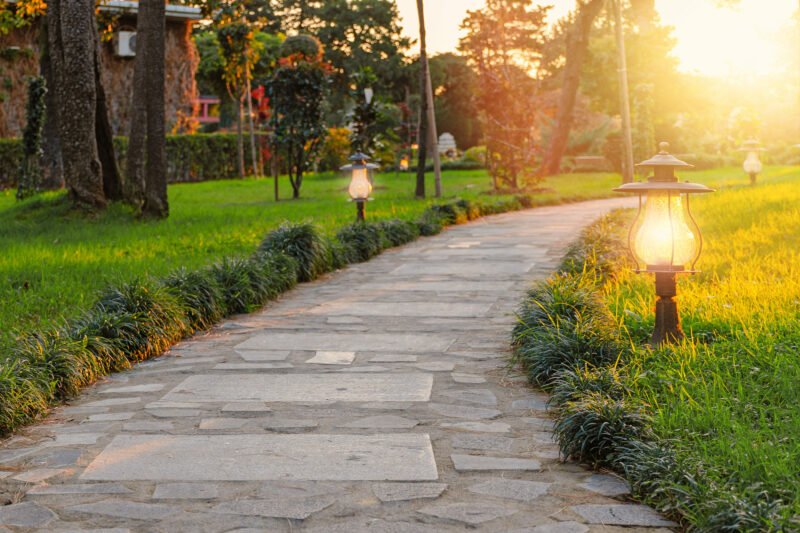
Flush Lights
Flush lights are also known as in-ground lights. Essentially, you’ll only see the light on the floor. You can even step on them without the glass fixture breaking.
This type of path lighting is perfect for pool areas. In general, you can add one flush light with 10 lumens for every square foot of area. Not only will people be safe from tripping at night, but it can also help add character to your pool.
Downlights
Adding downlights is best for larger spaces where you want the majority of the area to be bright. They work similarly to a spotlight.
Typically, you’ll mount downlights on a tree or somewhere high up. Some homeowners install them on a roof, soffit, or pergola.
Because of its discrete placement, downlighting is sometimes called Moon Lighting. Not only does it mimic the delicate glow of the moon, but it also creates a beautiful ambiance.
Since this is a different type of path light, it ranges from 700 to 900 lumens.
Solar Lights
Solar-powered path lights require no effort to install at all. You won’t need to worry about electrical chords or power consumption since it gets energy from sunlight.
What’s great about this is that you simply plunge one beside a path walk, preferably one that has soft soil. Some types of solar power lights can also automatically turn on once it’s dark.
Solar path lights also have a wider range of brightness, varying from 2 to 200 lumens.
On the plus side, you’ll only have to replace the battery every year or so, depending on how much you use them.
Directional Path Lights
If you want more adjustable fixtures, directional path lights may work for you. For the most part, they look similar to a traditional path light. However, they have a movable top head that you can face anywhere you want.
That said, you can find these path lights with 100 to 200 lumens.
Having directional path lights also allows you to lessen the glare by controlling the effect of light.
However, you may need to sometimes rearrange this fixture. That’s because some nights may be darker, so you’ll need to reposition the light to accommodate other areas.
Recessed Path Lights
Although they’re not the most popular kind of path light, some homes still have recessed path lights. Typically, the light will have a recessed position on a cemented path.
However, you won’t get as much light as other types of path lighting. On the flip side, you can easily tell where the edge of the walkway is while still knowing where the path is.
Since its main purpose is design, you can get recessed path lights with 50 to 185 lumens.
